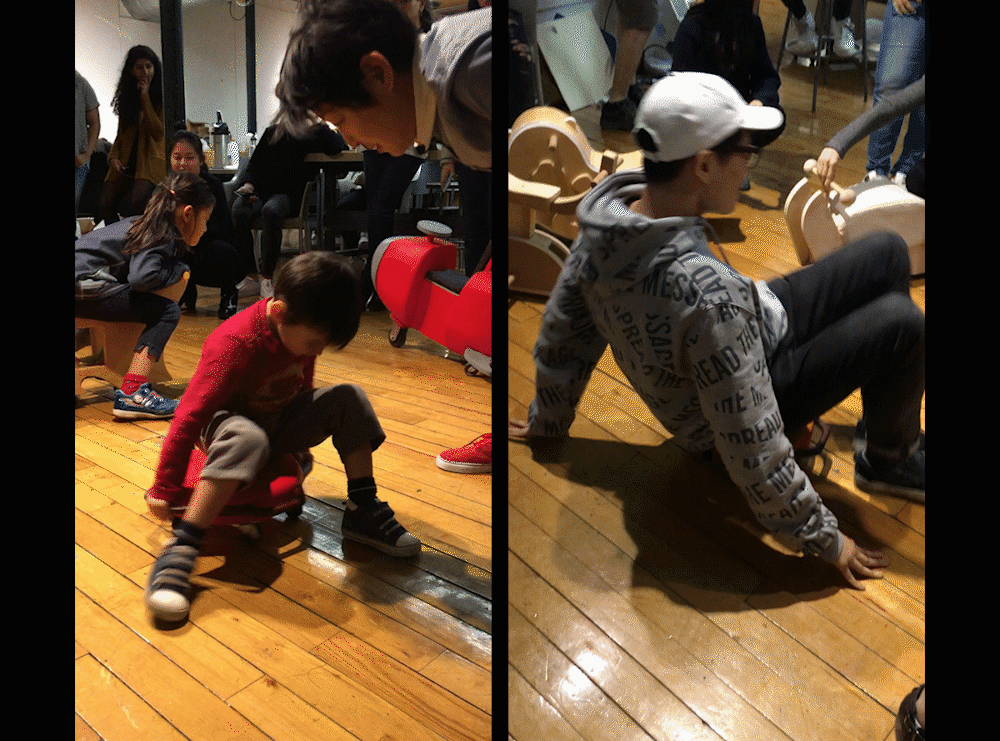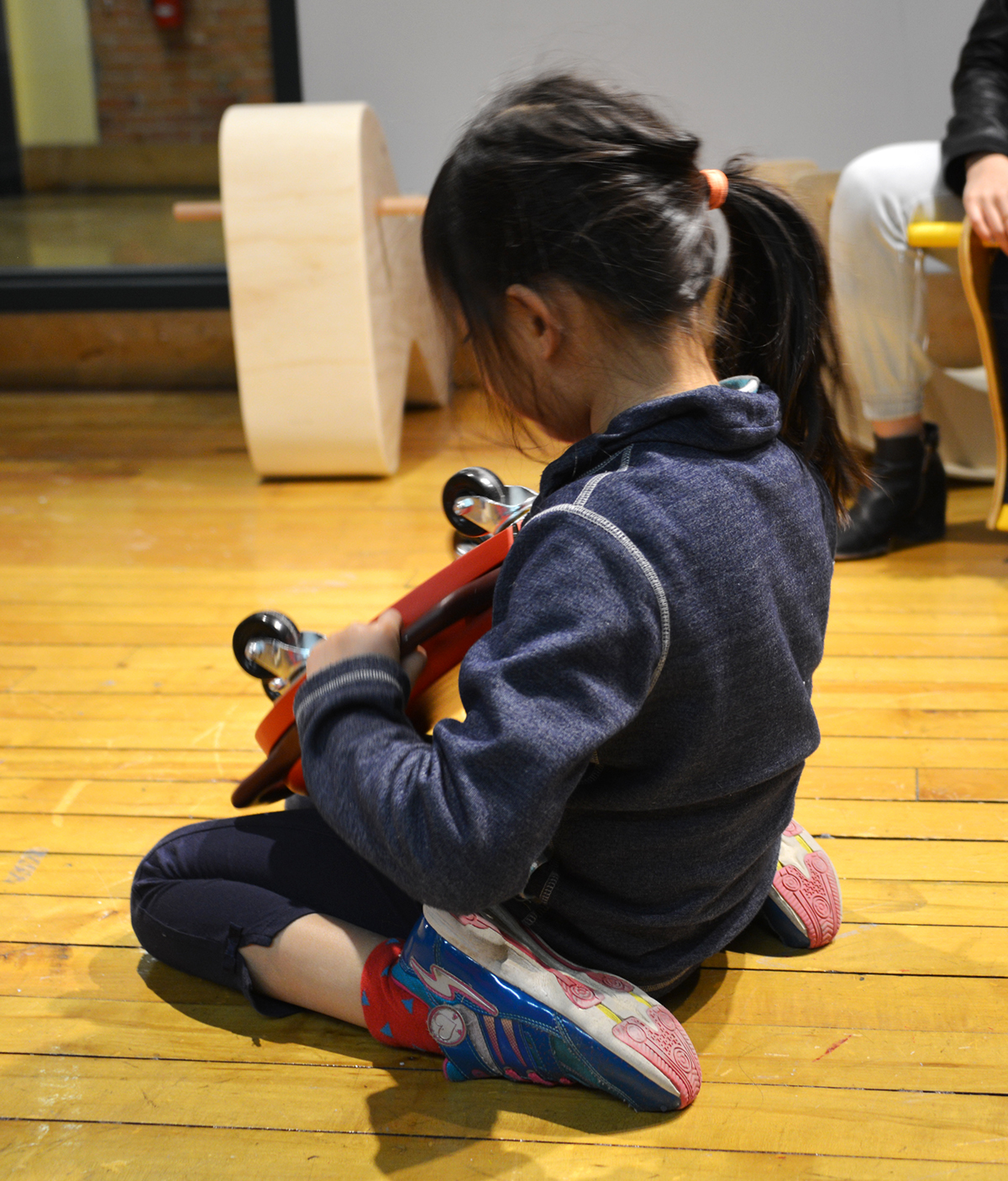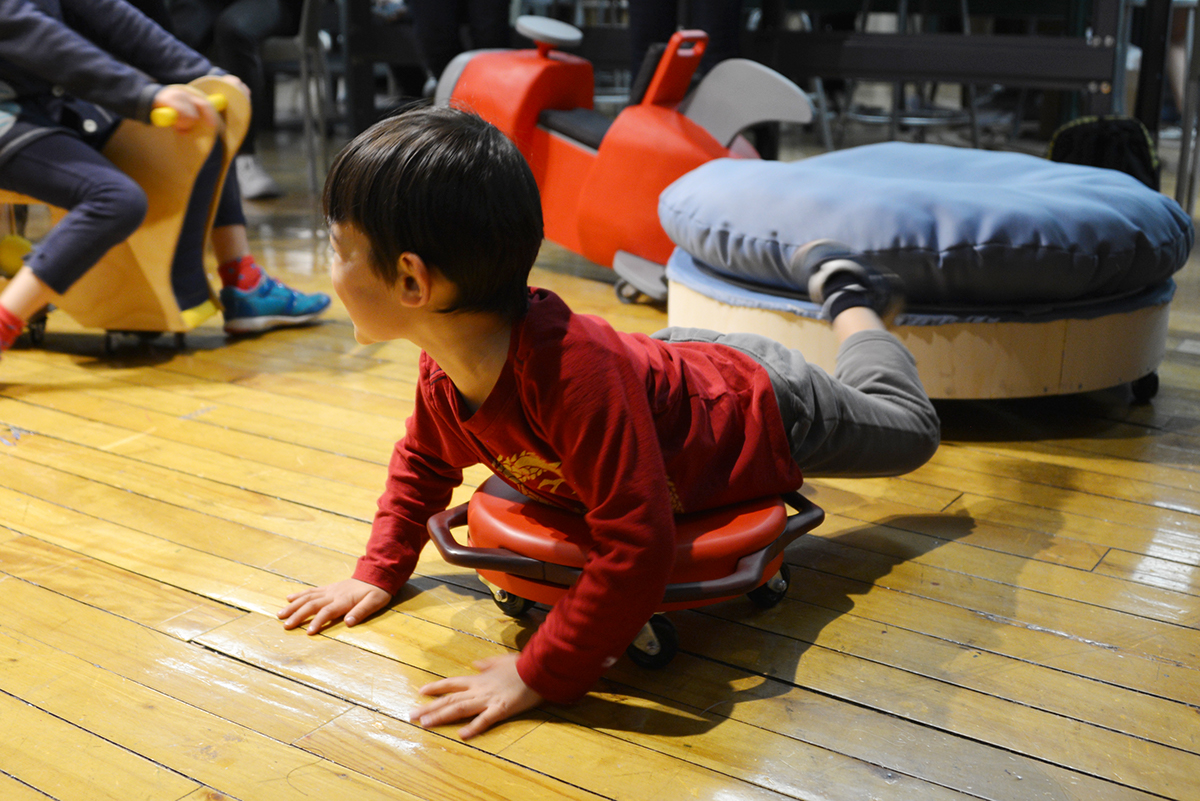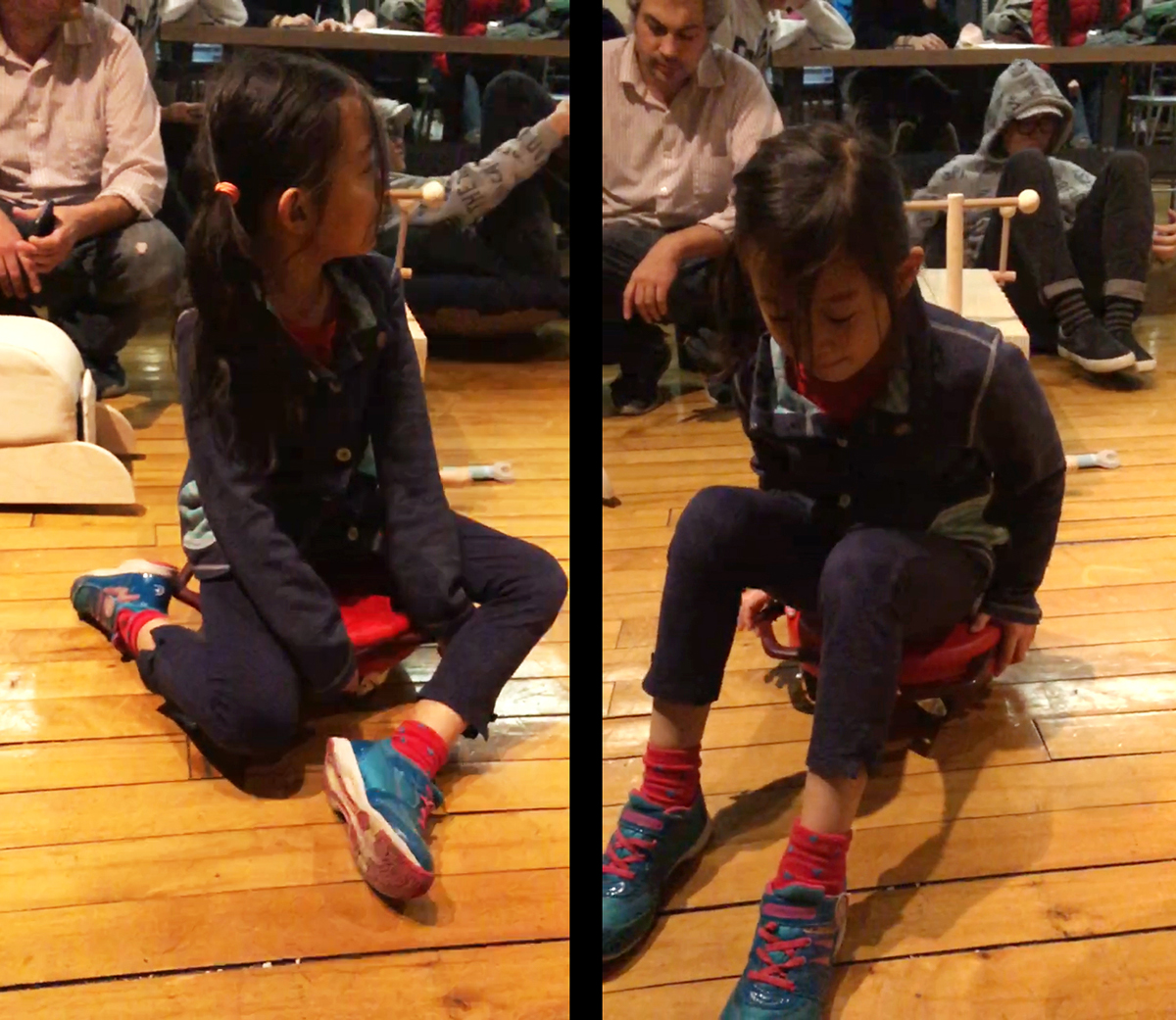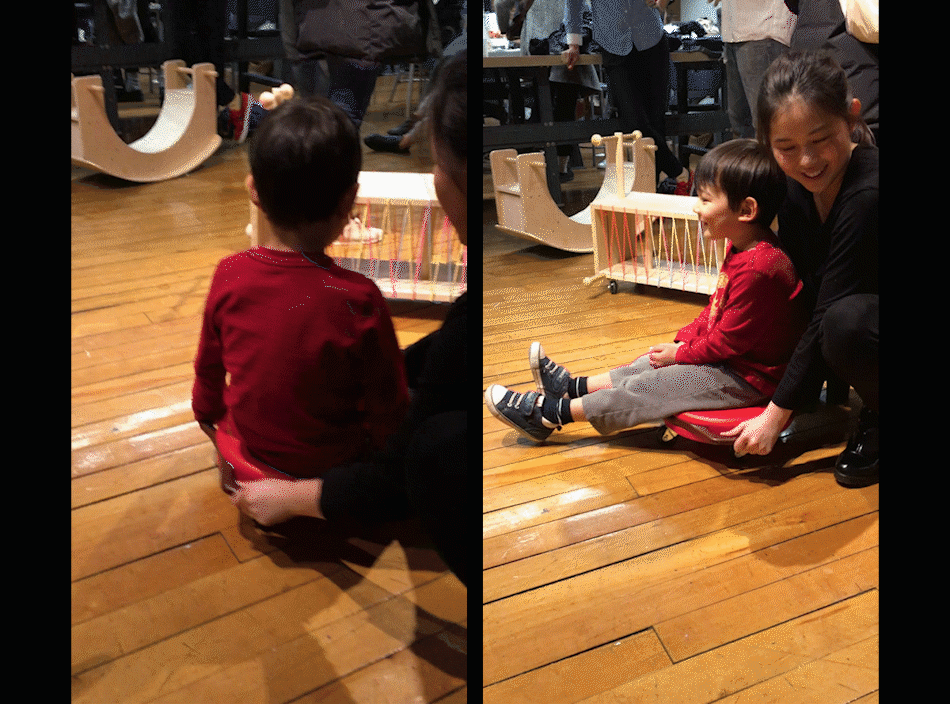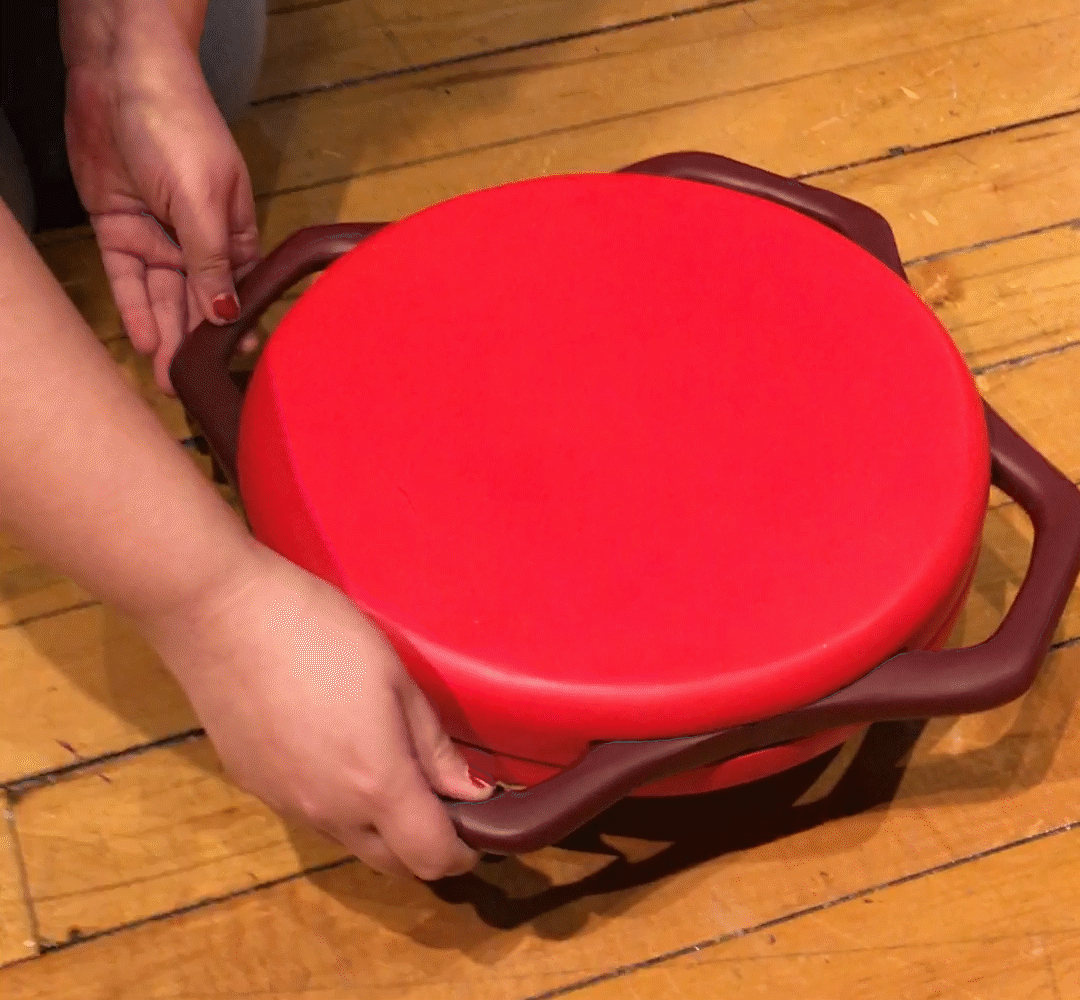Prototyping Form, Fall 2016, Instructor: Ayako Takase
A Little Rider: 360° Scooter
Adding a spin to the classic floor scooter while making it more user-friendly.

Prompt | Timeline: 4 Weeks
Design and build a little ride-on toy for toddlers (ages anywhere between 2-6).
Process
To begin this project, I started off by conducting research for my user group. I decided that I wanted to design for toddlers ages 3-6.
At this age, I found that children are:
- acquiring greater motor skills
- developing their brain, which can be enhanced with movement through space
- gaining confidence
- seeking independence
The following were three major criteria parents looked for in toys they bought for their children:
- safety
- durability
- ability to be stored
I wanted to design a safe and durable wheeled ride-on toy that would physically engage and be powered by the user (age 3-6). As parents are the deciding factor in purchasing new toys, I wanted the aesthetics of my ride-on to appeal primarily to parents.
I started looking at wheeled ride-on toys that already existed on the market. I was particularly interested in toys that would be powered by the user, which I believed would not only further increase their confidence, but provide the ability for the user to play independently as well. I began looking at ride-on toys that had these qualities: push bikes, toys that moved forward by twisting a wheel or moving pedals, floor scooters, as well as playground toys.
One toy that stood out to me was the EzyRoller, pictured below in the upper right-hand corner. I was interested in this toy not only due to its ability to move forward due to the principles of cambering and angular velocity, but also for its relative proximity to the ground.
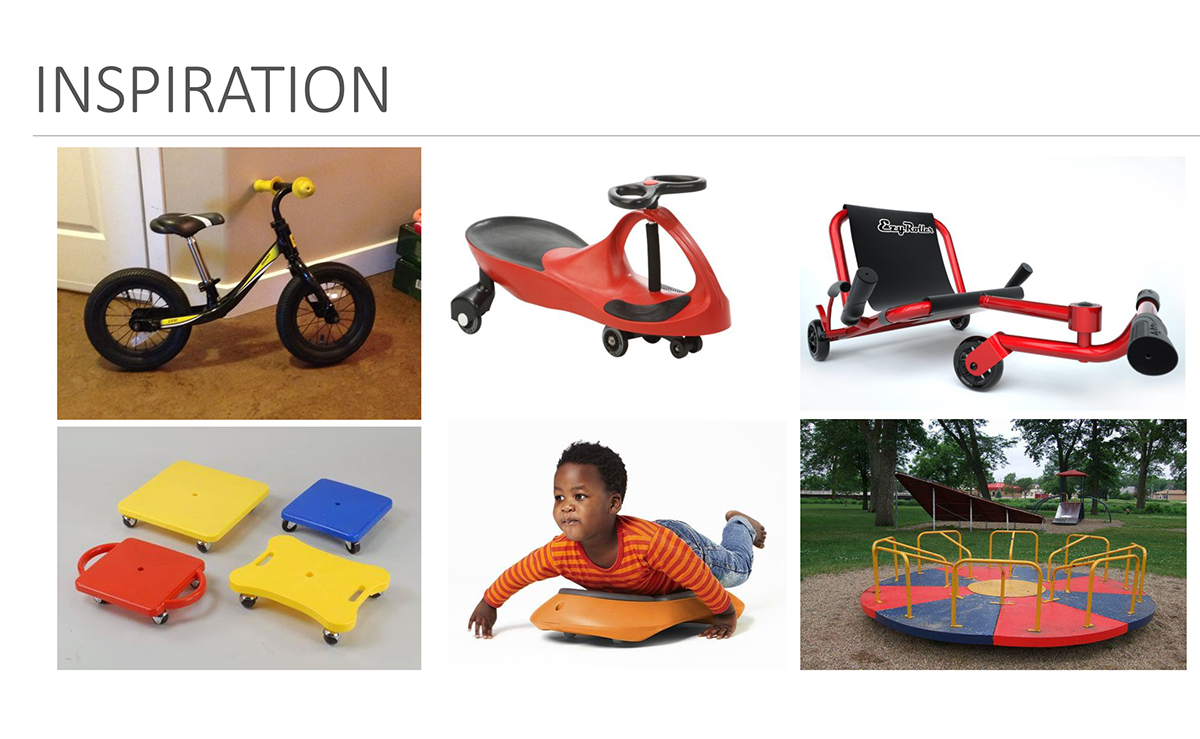
I decided to make my own works-like model of an EzyRoller to understand its mechanics and to see if it would be a viable option for my user group.
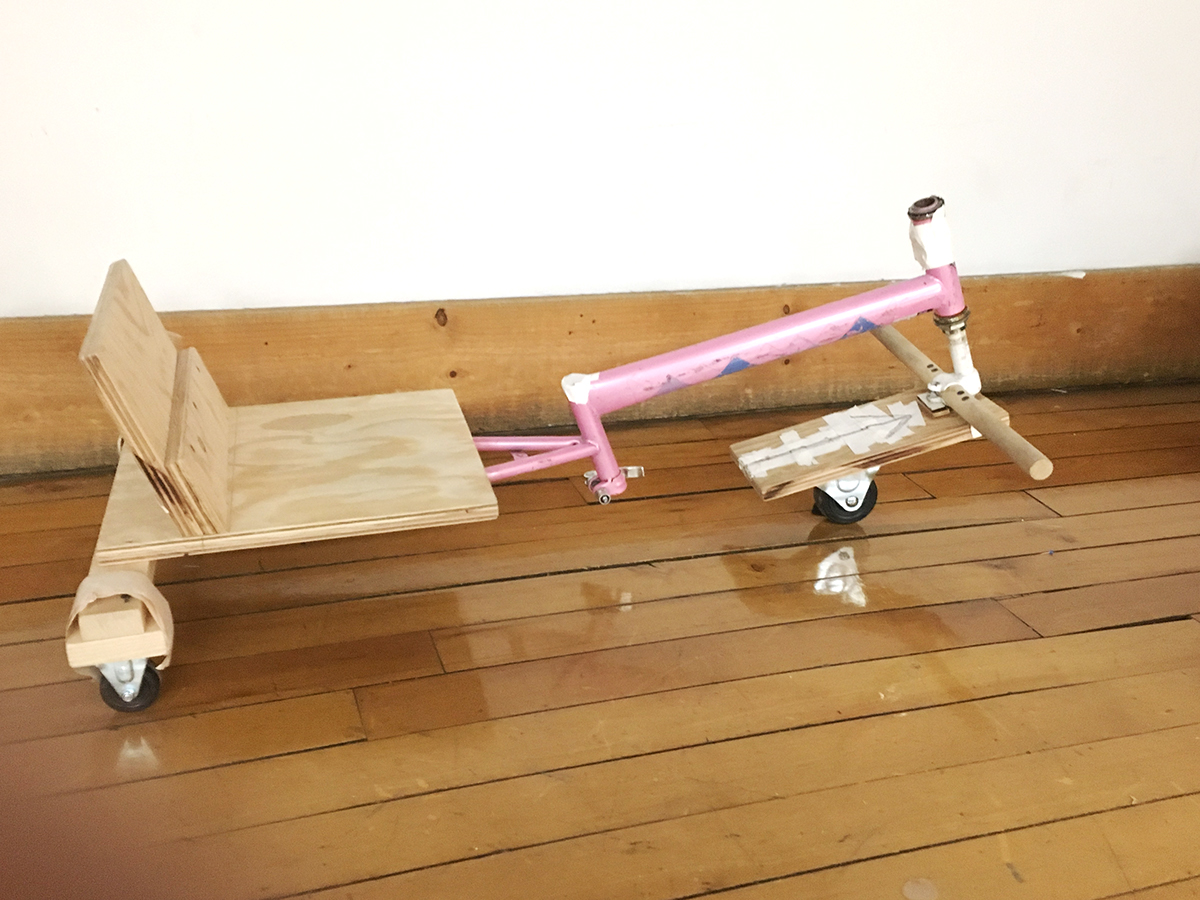
I learned that the works-like model that I made was more suitable for older age groups as younger children are still developing their motor skills and coordination. However, I was still drawn to the idea of creating a ride-on at a height other than that of a standard push-bike or rocker. From here, I transitioned to the idea of creating a floor scooter.
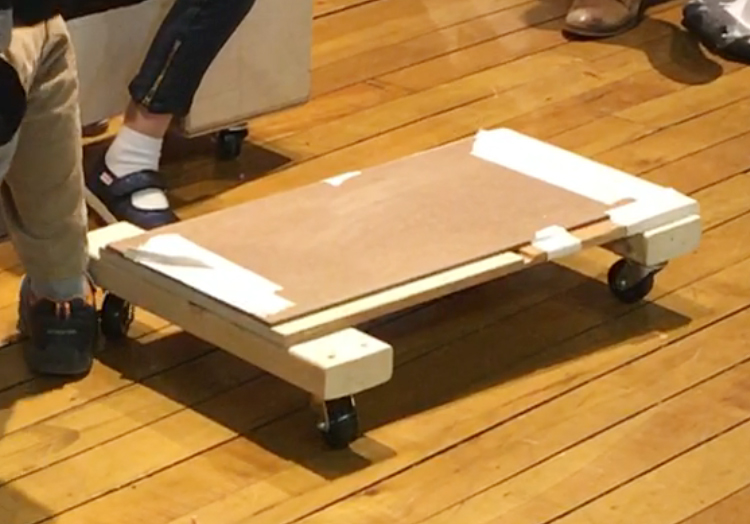
With this prototype, I noticed a variety of play patterns. Kids enjoyed using the scooter as a platform for travelling either on their belly or on their knees. They also found other ways to use the scooter, likening it to a skateboard.
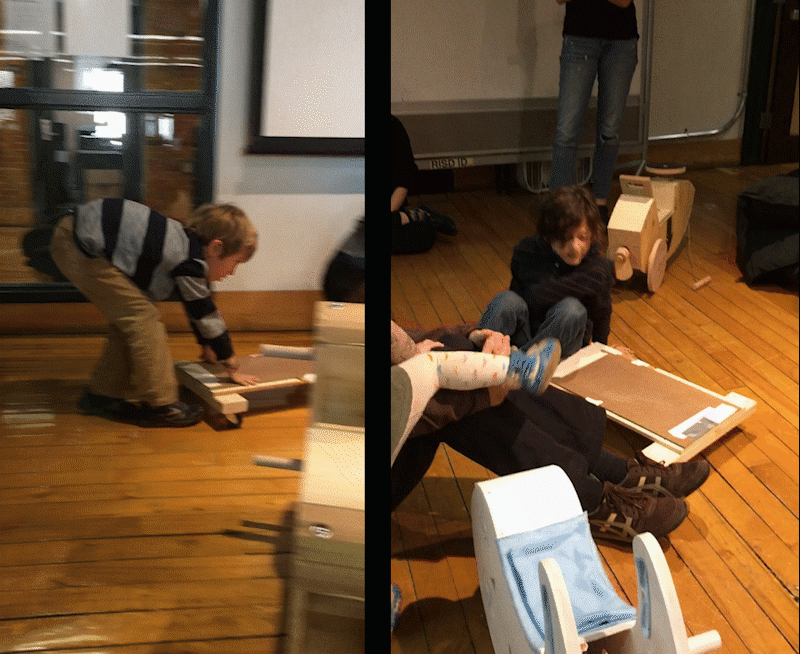
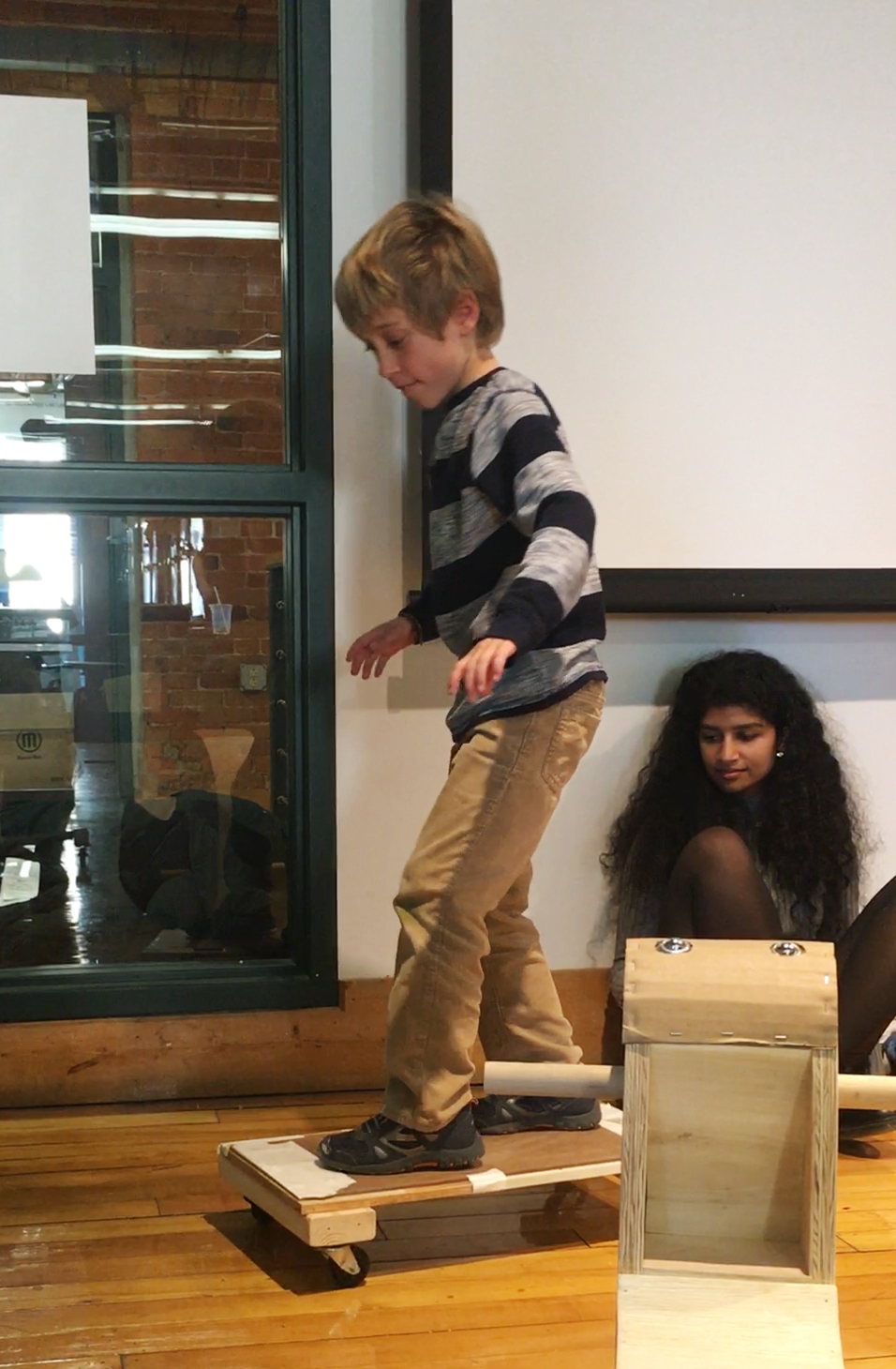
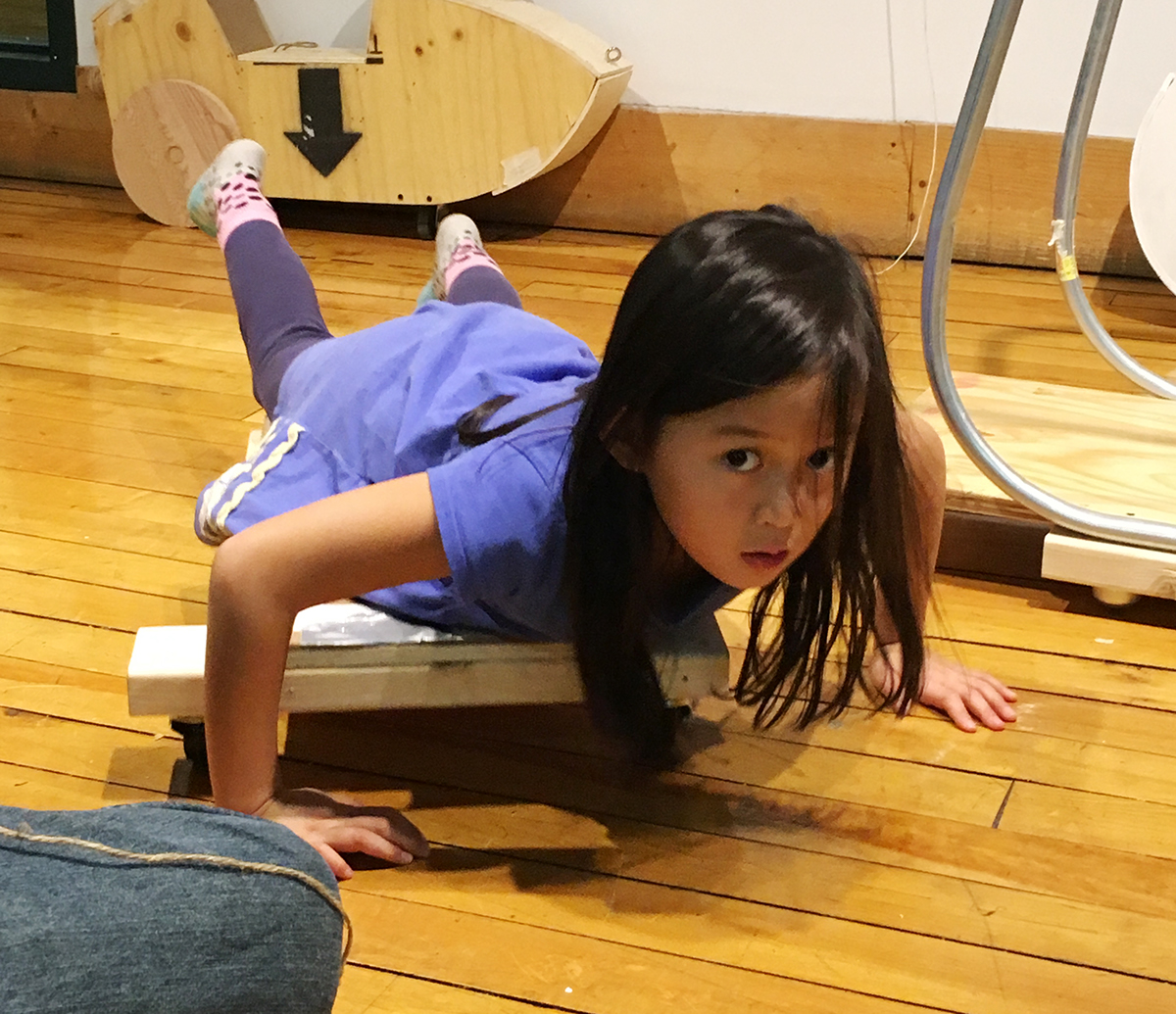
Feedback I received from the children testers were that they wished that the scooter could spin around and that it could lend to easier maneuverability.
For my next prototype, I added the spinning feature to the scooter, as well as handles. I also played with the proportions of the scooter to make it easier to move around. In addition, by changing the proportions and form language of the scooter, I wanted to reduce the likelihood for the scooter to be used for unintended purposes that could prove dangerous (e.g. as a skateboard).
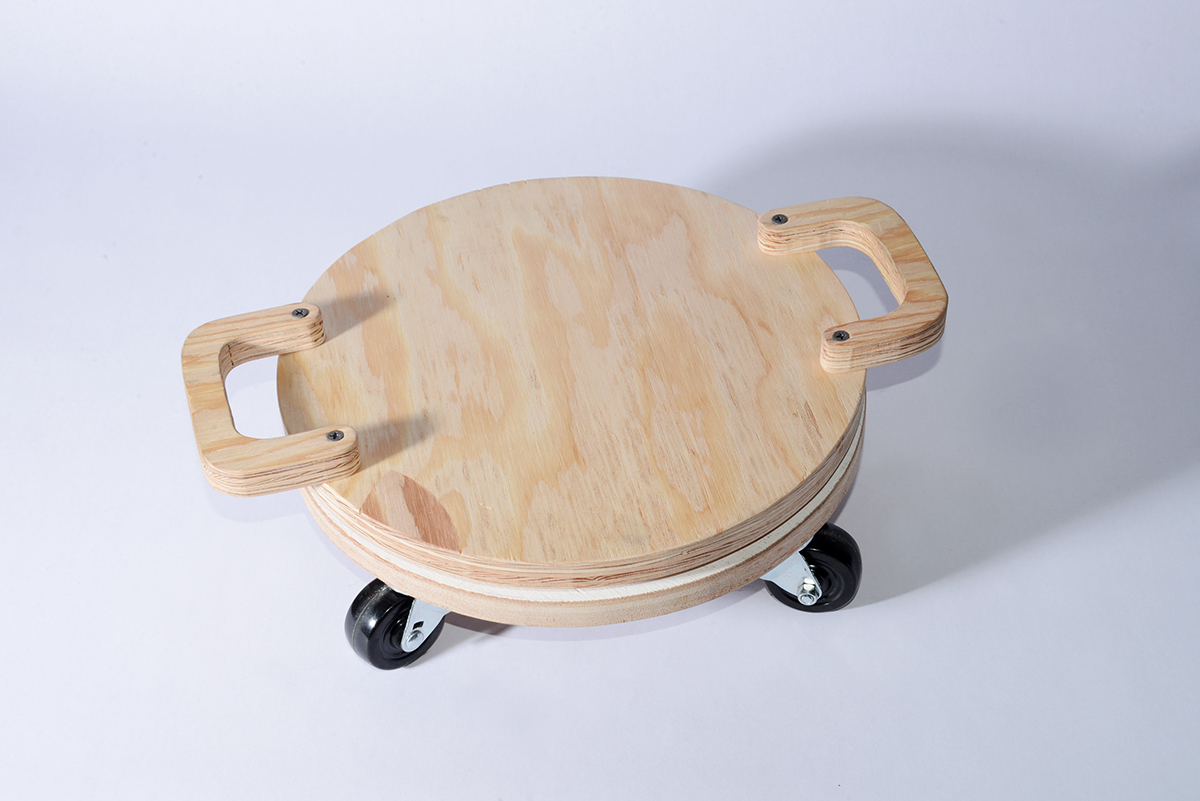
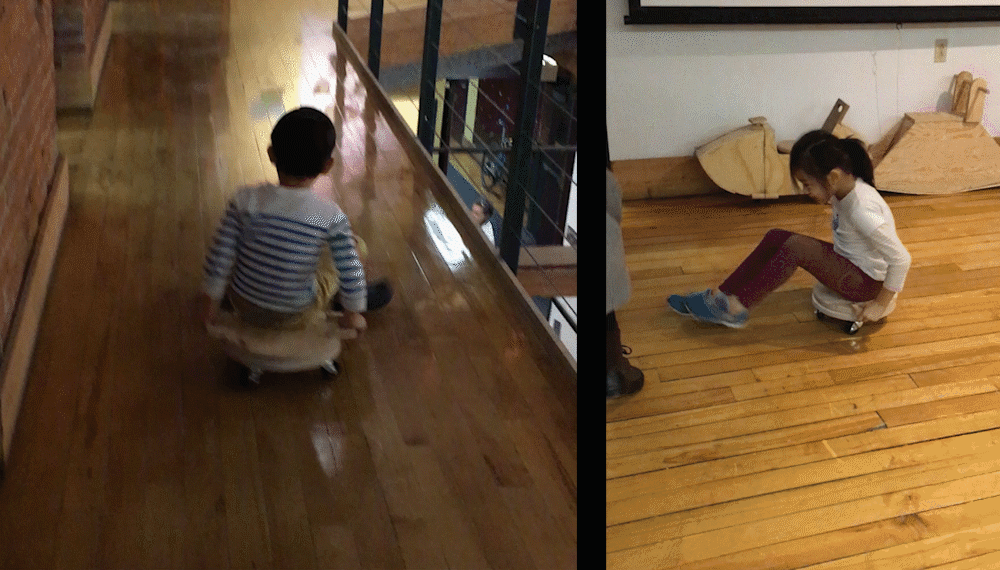
To further foster children's desires to be more independent at this age, the smaller scooter size allows the user to transport the toy with ease.
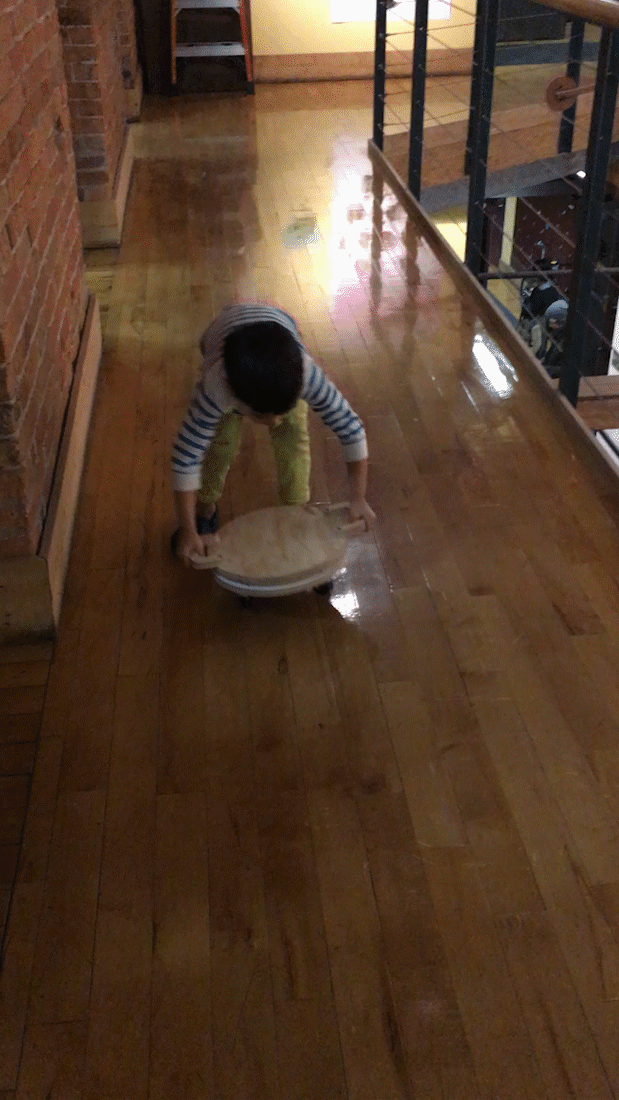
For my final prototype, I decided to add more handles and change their positioning, as in my previous model, the gap between the circular plates could be a safety hazard. The addition of more handles would provide greater flexibility within the toy so that it could be multi-directional. Furthermore, the extra handles would allow for a parent or sibling to help spin the child while they are on the toy.
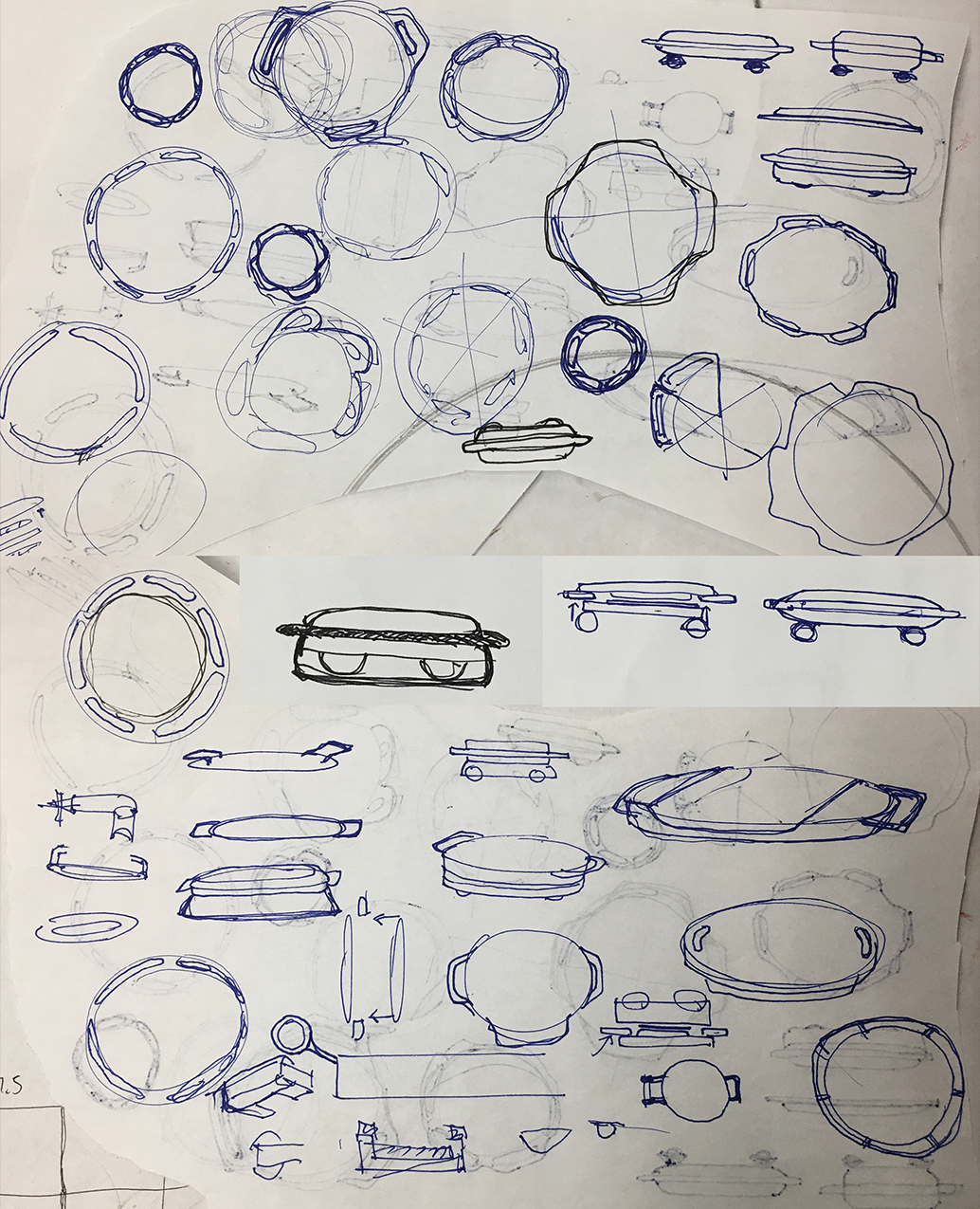
To create my final model, I used plywood, which was shaped, sealed, and then painted. Ideally, this toy would be made using injection-molded plastic, and the handles would be created from a single mold. Various color combinations would also be available at retail.
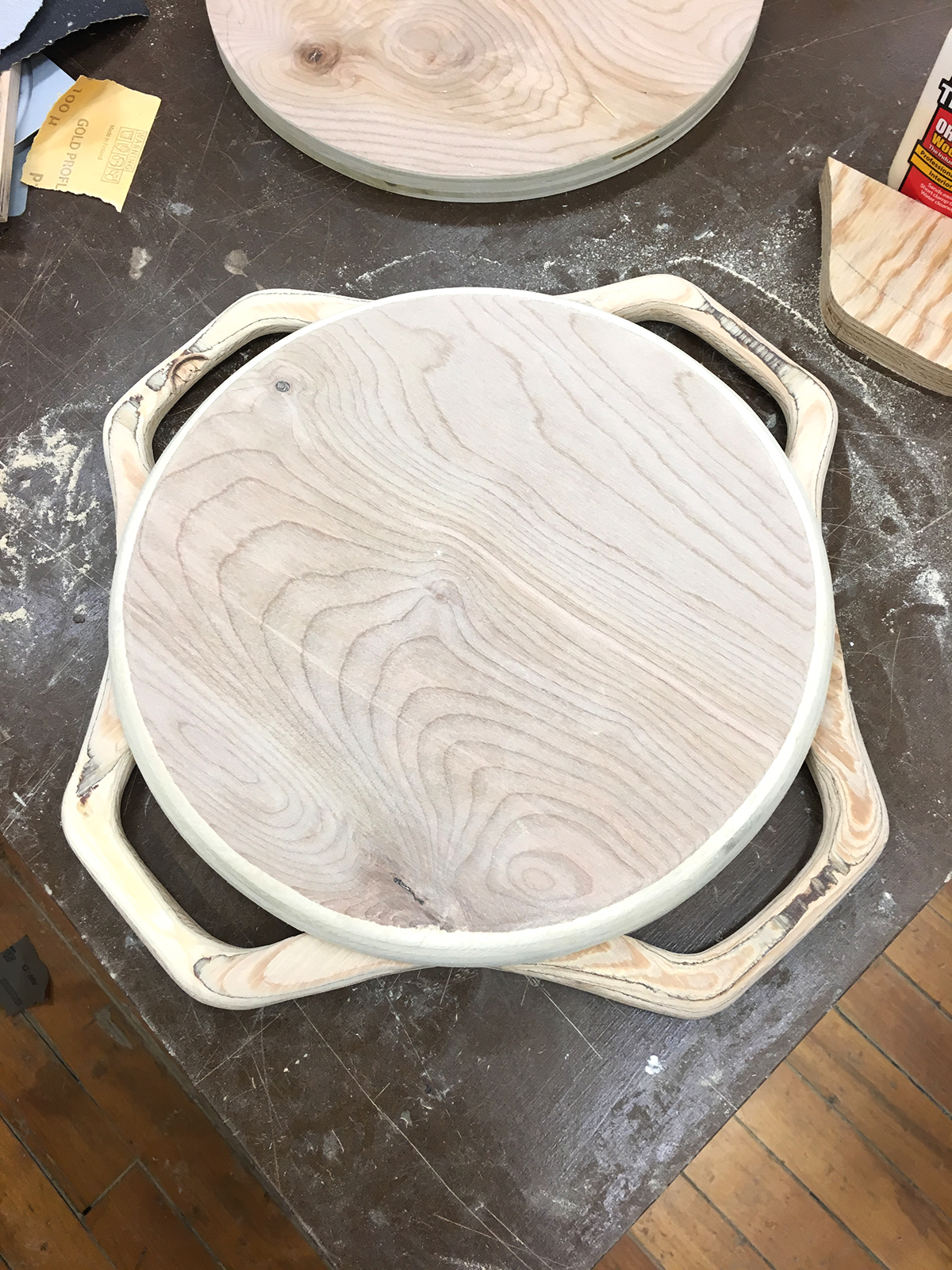
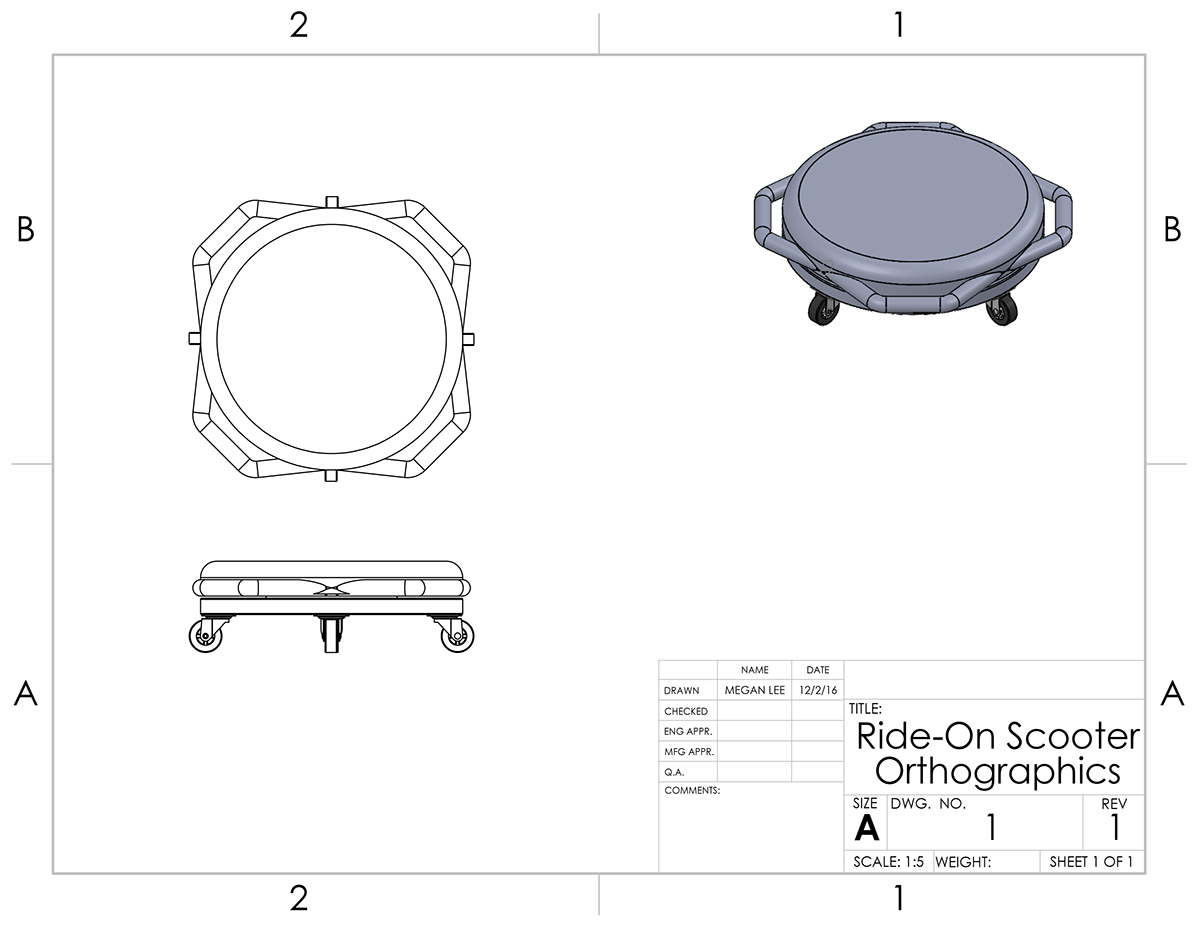
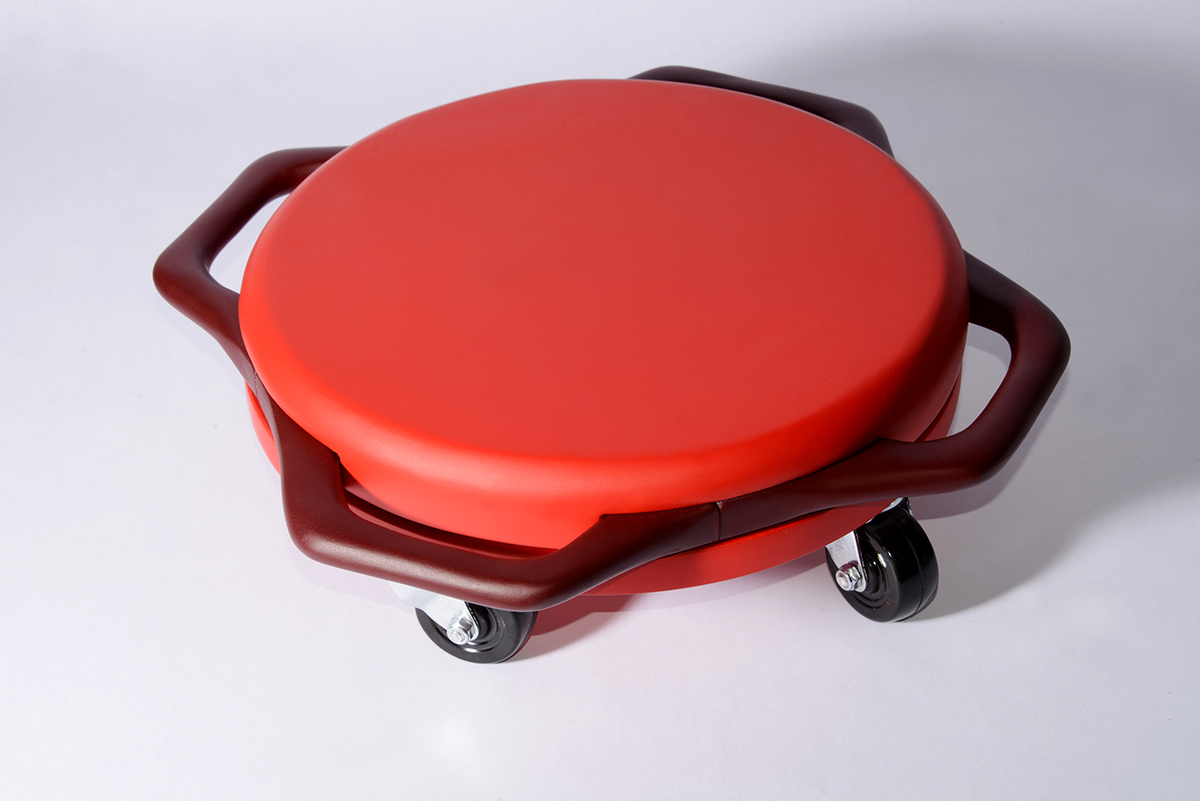
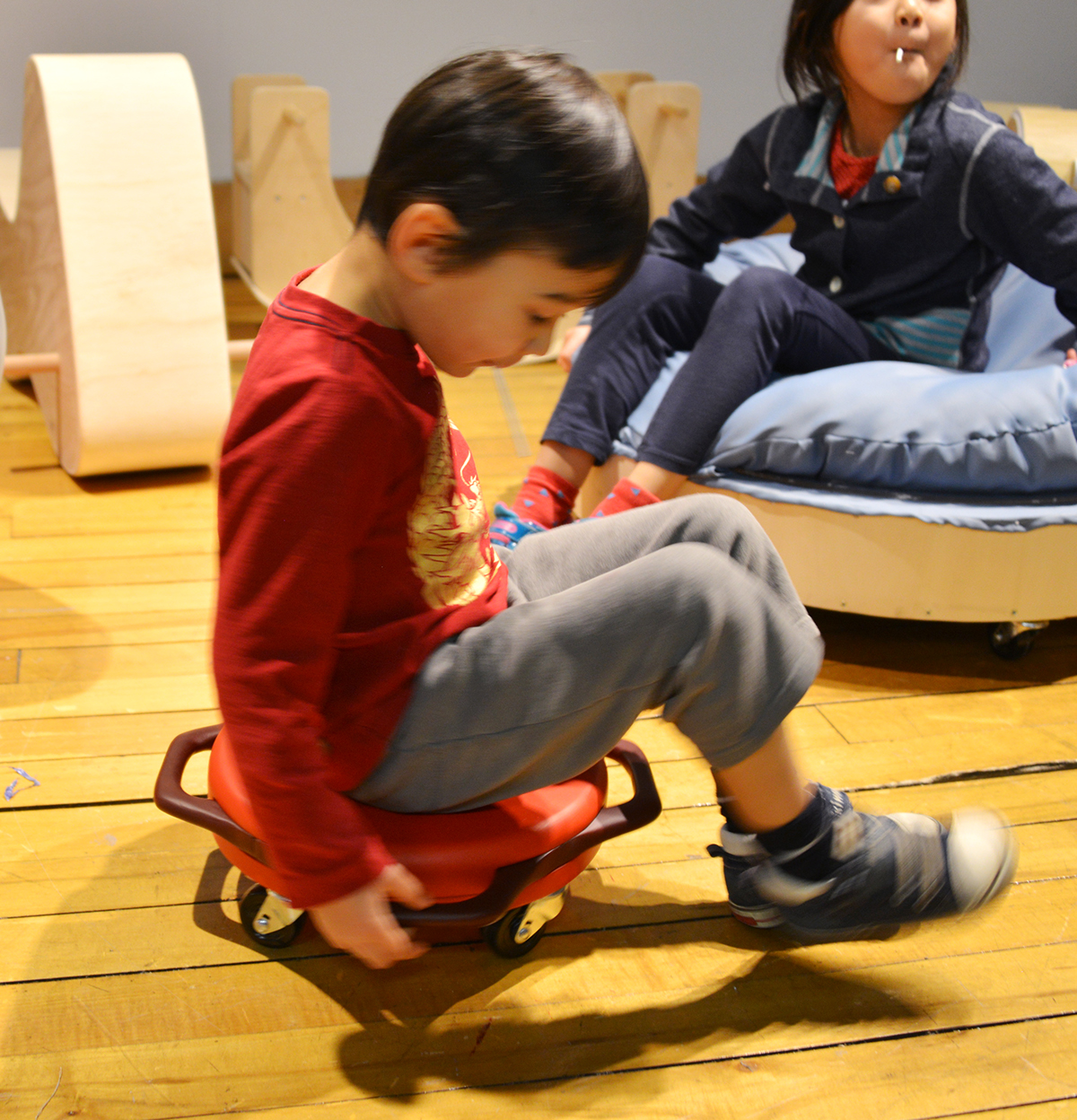
The toy can be used by the intended user group and enjoyed by older users as well.
